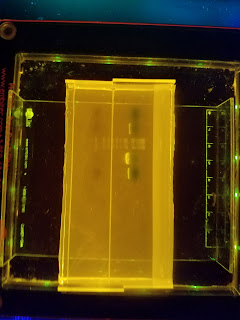Project Abstract
Although
my topic of study may seem obscure (the α6β2β3
nAChR subtype), it is actually critical in rewarding nicotine addiction. When
the genes for this specific receptor subtype are inactivated, mice have been
shown to stop self-administering nicotine because they consequently lack the
receptors necessary to release dopamine (the “feel-good” neurotransmitter
behind many addictions) upon nicotine administration. Similarly disabling these
receptors in humans could have a remarkable impact on smoking cessation.
Unfortunately, we are not yet certain because, as of yet, these receptors are
extremely difficult to recreate in frog oocytes (egg cells), which are
typically used to study receptor function due to their manipulability. Dr.
Chang hypothesizes that in order to successfully express the
genes for these receptors in
frog oocytes, they must be inserted alongside genes coding for opioid receptors. We can test this
through simple DNA injection or more complex techniques such as electroporation
(literally “shocking” the cells into taking in the DNA). If this hypothesis proves successful, further
research can determine the function of these apparently critical receptors and
how to utilize them to combat nicotine addiction.


Comments
Post a Comment